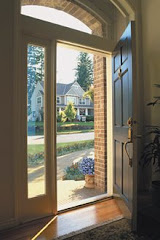MARKET RECAP:
The missing piece to the housing-market puzzle has been put in place, thanks to the new-home market finally showing signs of sustained recovery. Homebuilders unexpectedly broke ground on more homes in June, as construction of single-family projects jumped by the most since 2004. The 3.6% increase brought starts to an annual rate of 582,000 units, the highest level since November, and followed a 562,000 pace in May. Even more encouraging, building permits, a sign of future construction, rose the most in the past 12 months.
Not surprisingly, home builders are feeling a little more upbeat these days. Sentiment in July jumped to its highest level since September 2008, based on the National Association of Home Builders/Wells Fargo Housing Market Index, which posted a 17 reading, a two-point improvement over June's reading.
It's no secret that lower borrowing costs and low prices are making houses more affordable. Speaking of the former, they continue to improve. The benchmark 30-year fixed-rate mortgage inched lower to average 5.58% last week, according to Bankrate.com's national survey of large lenders, while the benchmark 15-year fixed-rate mortgage remained unchanged, averaging 4.93%. That fact that rates held steady is good news, considering that consumer and producer prices spiked higher than expected last month on rising energy costs.
Money to Spare!
All that talk about TARP recipients withholding their bailout funds appears to be just that – talk. Lending among the top 21 recipients of bailout funds through the Capital Purchase Program within the Treasury Department’s Troubled Asset Relief Program posted growth in May, with mortgage originations rising by 7% over April’s figures.
Furthermore, there is more money available to lend to more people. A few weeks ago we mentioned Fannie Mae's and Freddie Mac's home affordable refinance program. It's worth plugging again. The HARP affects millions of homeowners currently in Fannie Mae or Freddie Mac loans and permits first-mortgage loan amounts up to 125% of the home's current appraised value, with and without a second mortgage already attached. In addition, closing costs and as many as two payments can be rolled into the loan and up to $2,000 can be taken out of the mortgage.
More funds are available through use of the highly promoted $8,000 first-time home buyer's credit, though confusion among the public remains high, according to a recent RE/MAX survey. A leading confusion is what happens to the full $8,000 if a qualified individual or couple pays less than $8,000 in federal taxes? The answer is straightforward: They get a refund check for the difference. Another confusing aspect to many potential home buyers is the possibility of repayment. An earlier version of the first-time buyer tax credit did have to be repaid, meaning that it functioned like an interest-free loan. The updated version, approved this year, eliminates the need for repayment unless the home is sold within three years.
Monday, July 20, 2009
Subscribe to:
Post Comments (Atom)




No comments:
Post a Comment